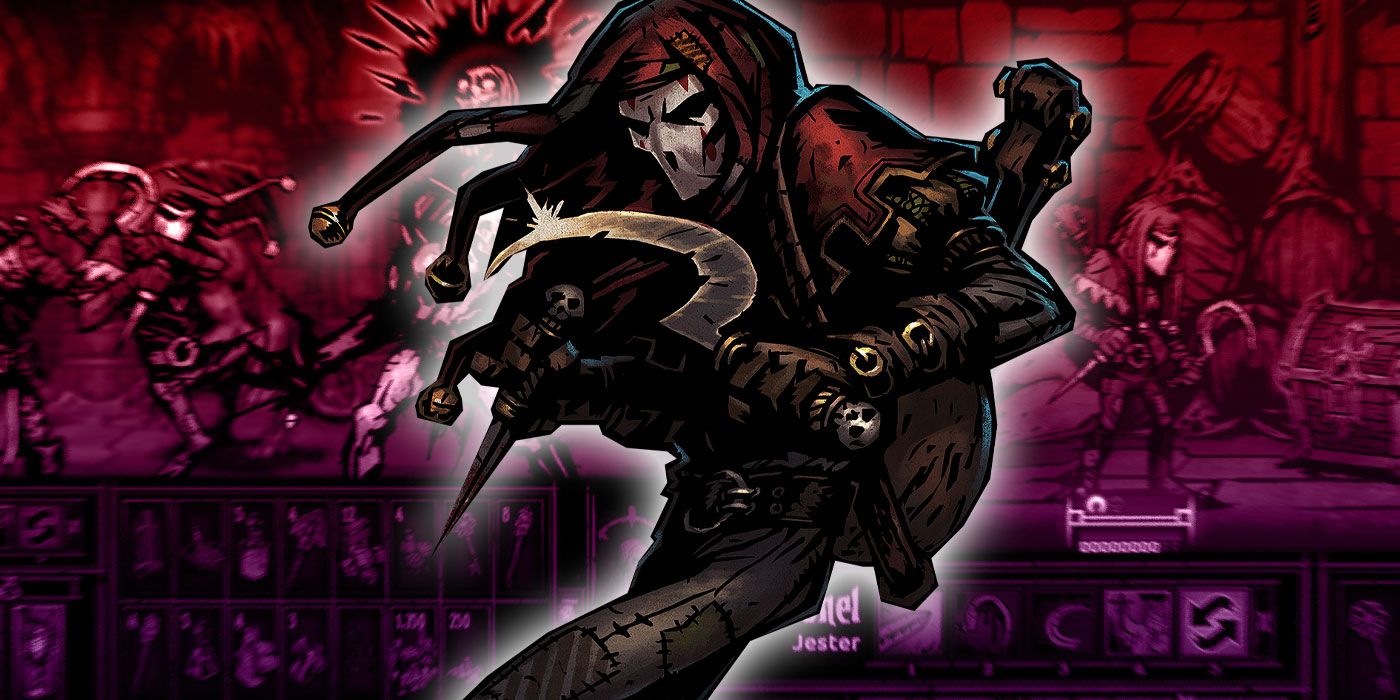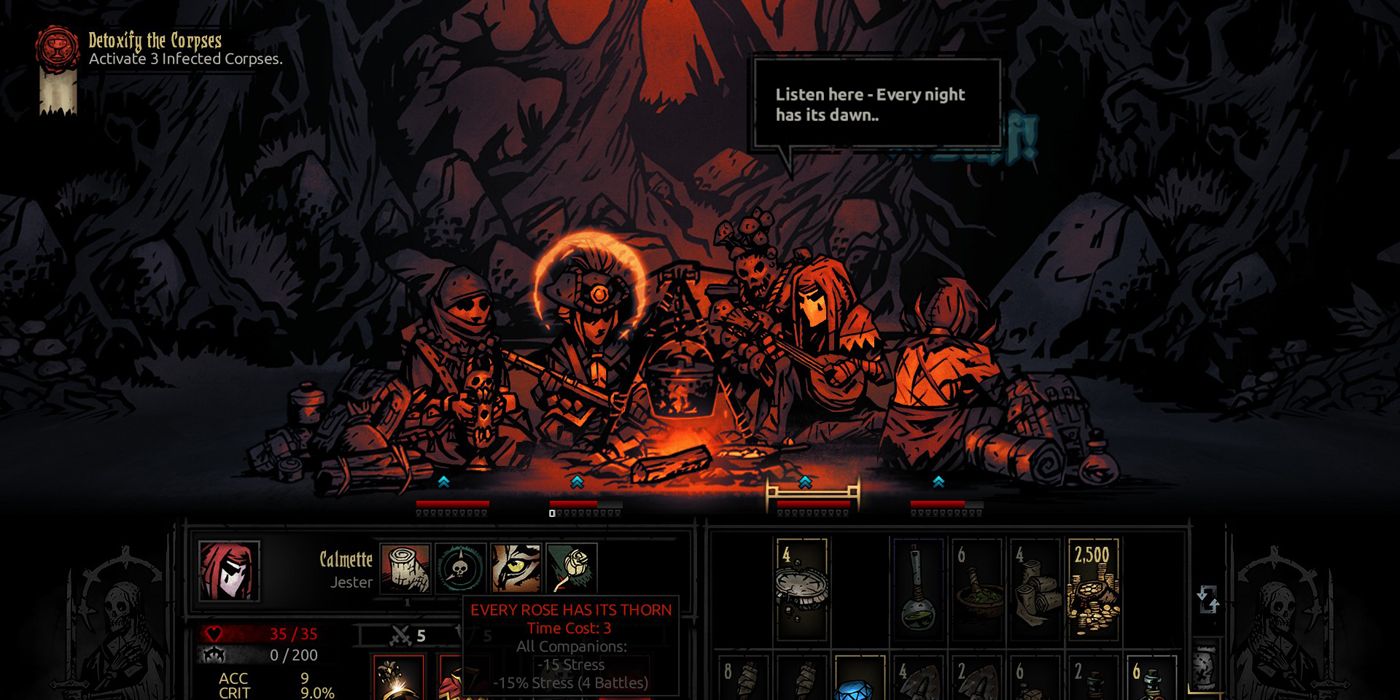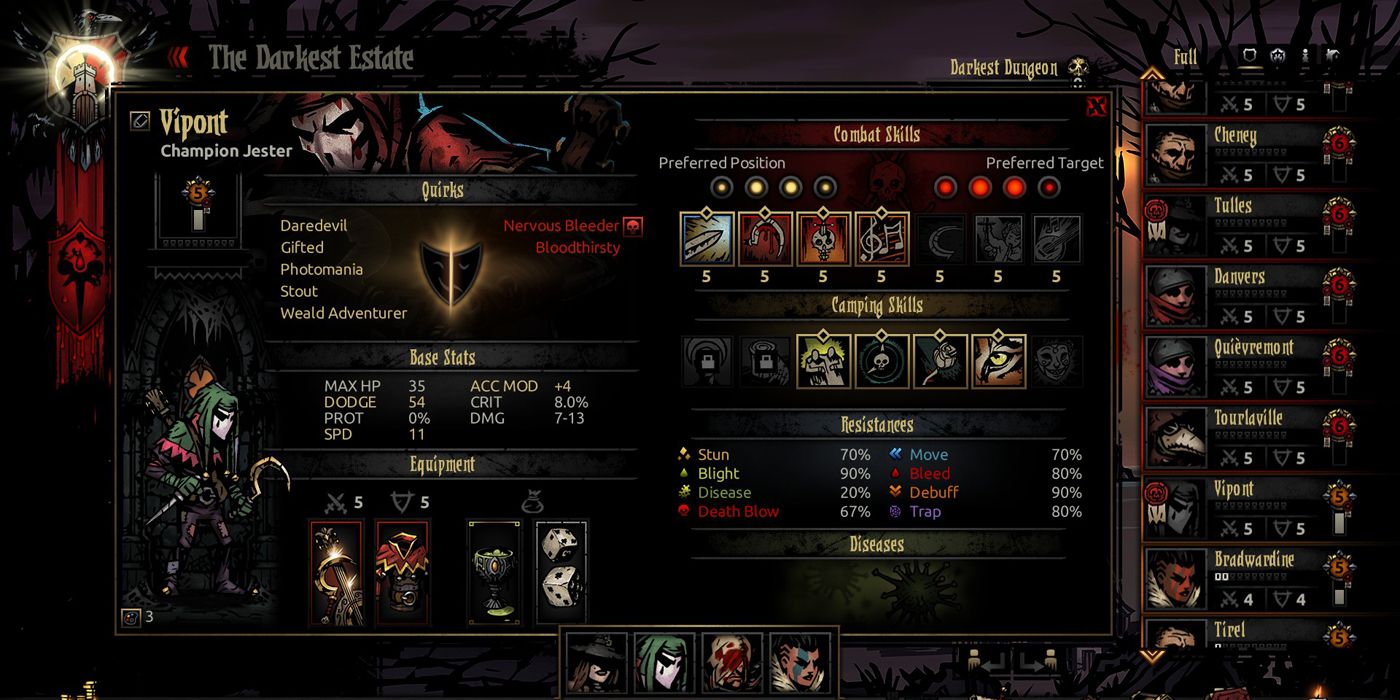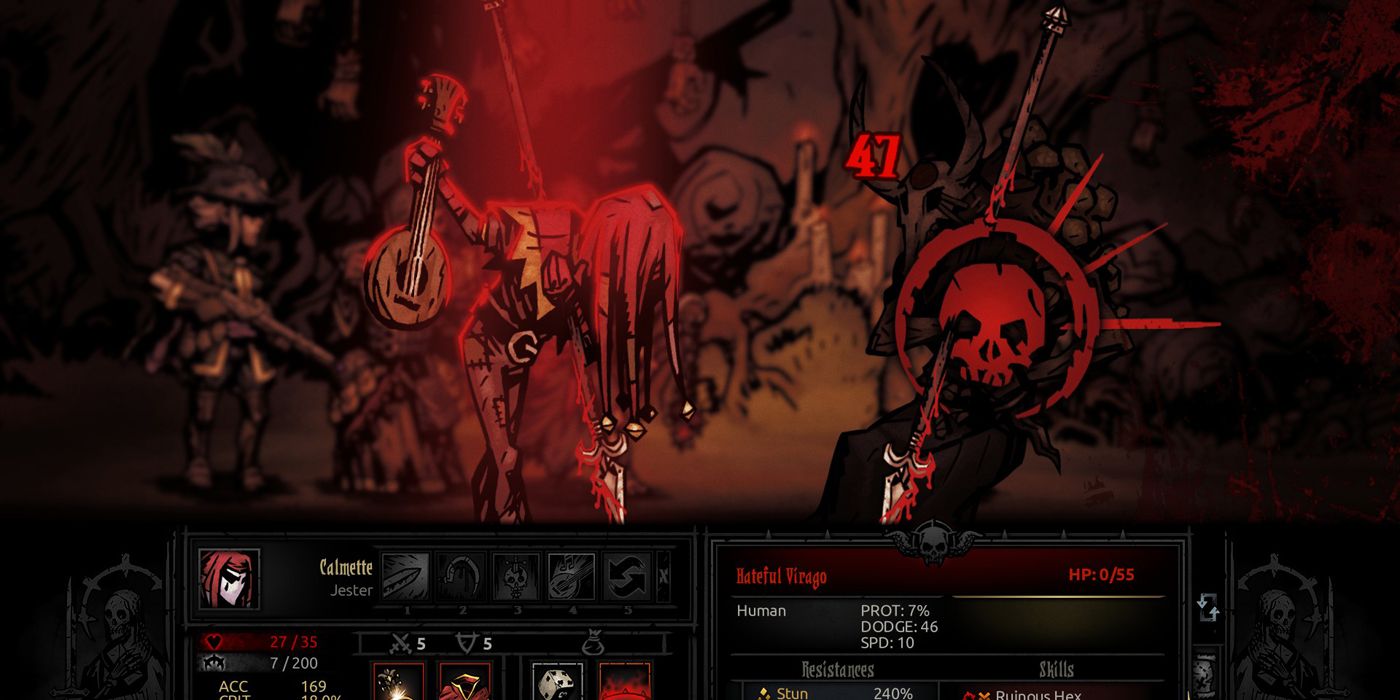
Red Hook Studio's 2016 game Darkest Dungeon stands out from its peers for how punishing and unforgivable it can be. It's possible to lose your starting heroes in the tutorial level, RNG is not your friend, and often you have to test many different items to figure out a curio. Heroes can and will die with unfortunate frequency, and unlike many other games, they stay dead.
But all hope is not lost. It's not a good idea to get attached to any of your heroes (even though you will), but it's always a good idea to have at least one Jester in your roster. The Jester, like the other heroes, is a flawed character fleeing his past in search of glory and redemption in the Estate. Unlike the others, he turns his jesting and music-making into a means to combat the darkness.

The Jester's combat skills can be split evenly into two categories: stress management and bleed damage. Harvest and Slice Off both deliver damaging cuts that cause Bleed damage to the opponents, although Harvest gains a slight edge by hitting two slots at once; since you always want to end battles quickly in Darkest Dungeon, it helps hit multiple opponents hard and fast. Dirk Stab, despite the knife graphic, does not cause Bleed damage but makes up for it by ignoring the opponent's Guard stat, being usable from any position and bringing the Jester forward one slot, which is useful for when the team gets shuffled around, since moving a hero back into position typically costs a turn.
As for the Jester's musically-inclined moves, they can be used as support for the team. Battle Ballad grants buffs to Accuracy, Critical Hits and Speed, while Inspiring Tune reduces stress, the number-one killer of heroes in this game. Other moves, such as Solo, don't buff the team but instead puts the Jester front and center, moving him up three slots and boosting his Dodge and Speed in exchange for making himself a target. But every move he has provides a major boost to his finishing move, Finale, which leaves him with severe debuffs for the rest of the battle but can easily end the encounter when used right.

The Jester's camping skills continue to highlight his bardic nature. Three of his four unique skills refer to a famous song he'll quote when the skill is used. Tiger's Eye can boost the Accuracy and Critical Hits for one teammate for four battles, making it a good boost for your heavy hitter before a boss battle. Two of these skills, Turn Back Time and Every Rose Has Its Thorn, relieve stress, making them important skills to have, although the latter skill not only heals stress for the whole party but also reduces stress for four battles afterward. They're also the better pick over his fourth unique skill, Mockery, which heals a little more stress for the party at the expense of stressing out one member. Compared to the other skills, you'll likely never use this one.
The Jester also has three shared skills, any one of which will be useful for stress or health management. Encourage heals stress for one companion, although since it has the same stress heal as Every Rose Has Its Thorn and acts as a weaker version of Turn Back Time, it's doubtful you'll use it over the other two. Pep Talk acts as the secondary effect of Every Rose Has Its Thorn, which means if you use any of the shared skills, you'll probably use Wound Care, as healing any amount of health is important to a long dungeon run.

The Jester is a glass cannon--he can hit fast and bleed his opponents dry, but he can't take too many direct hits. His greatest stats are his speed and dodging, and as his equipment is upgraded, these two stats continue to get boosts. At their highest levels, his garb and weaponry provide a Speed base of nine and a Dodge base of thirty-five, showing that the best way to keep your Jester healthy and alive is to not let him get hit.
The Jester's trinkets are dice and tambourines, mostly showing his playful nature. Of the more common trinkets, the Lucky Dice, Critical Dice and Dark Tambourine are likely the ones you'll gravitate towards, as they provide boosts to his stats without the drawbacks trinkets like the Bloody Dice have. With the Crimson Court and Colors of Madness DLC, there are higher-quality trinkets related to the Jester's backstory, which can boost his stress skills but understandably cause stress when equipped.

The Jester is described as dancing back and forth through the ranks, which actively describes his combat style. Generally, the Jester prefers the middle two slots. However, thanks to his available moves, he's still viable no matter which position he's in, making him less affected by a sudden party shuffle than heroes such as the Antiquarian or the Crusader. Dirk Stab can be used regardless of position and moves him forward a slot, while Solo shoots him up three slots in addition to providing a major boost to Finale, which can only be used in the front two slots and sends him to the back upon completion.
Mostly, the Jester's combat centers around building up a strong Finale, which can only be used once per battle and leaves the Jester with major debuffs for the rest of the fight. Saying that, considering there are at least three moves that are centered around giving major boosts to Finale--and every move he has boosts Finale in some form--it's a worthwhile move to build around. Even if you decide not to go with a Finale build, that only really gets rid of Solo as an extra move. No matter what build you go with, you're going to want to keep Battle Ballad, as it provides a full-party boost to Speed, Accuracy and Critical Hits. Inspiring Tune only affects one party member at a time, but it also heals a good chunk of stress, making the Jester a crucial hero for stress management.
Aside from a Finale build, the build you'll most likely favor is the Bleed build--that is, bleeding your opponents dry. Since Bleed damage ignores all other factors such as Protection, bleeding your opponents out is a surefire way to victory, and the Jester delivers in this regard. Every Jester starts with the Harvest skill, an attack that hits two middle opponents and has a high chance for Bleed. Slice Off only hits one opponent but still causes Bleed damage. Both moves still help to power up Finale, too, making the powerful finisher a continuing option for this build. And since Bleed damage stacks, you can team up your Jester with other powerful bleeders such as the Flagellants, Hellions, and Houndmasters. Highwaymen and Grave Robbers can also reduce Bleed resistance, making them similarly good teammates to the Jester. The only places the Jester's Bleed attacks won't be useful are the Ruins and the Cove due to ridiculously high Bleed resists, but his music still makes him a crucial team member as far as stress management goes.
In sum, the Jester is a must-have hero when tackling the winding wealds and once-hallowed halls of the Estate. Whether it be cutting your opponents down with his sickle, inspiring his teammates with his epic riffs or demolishing a tough boss with a powerful finale, the Jester brings some much-needed levity to an otherwise dark and dreary excursion.
0 Comments